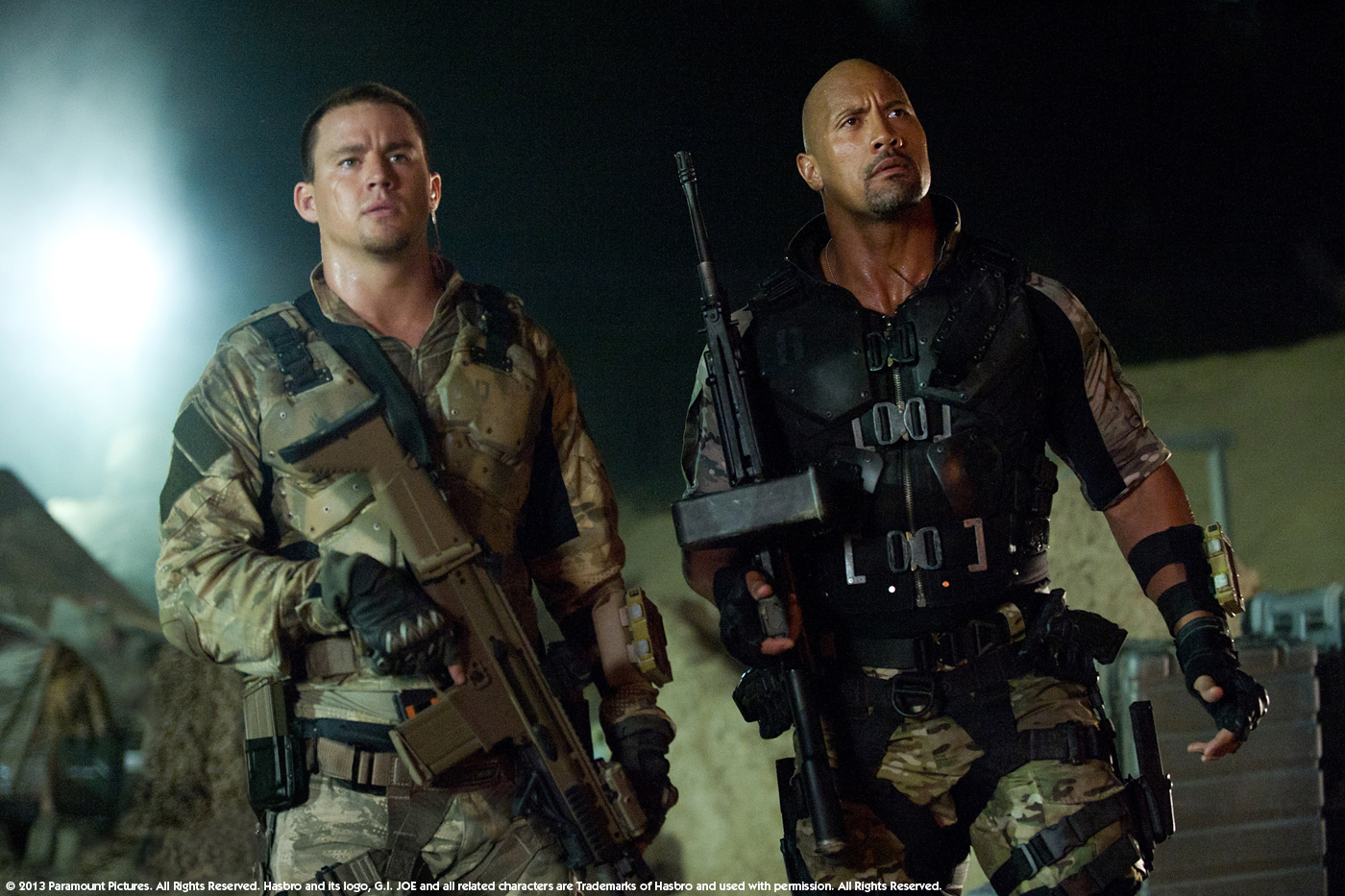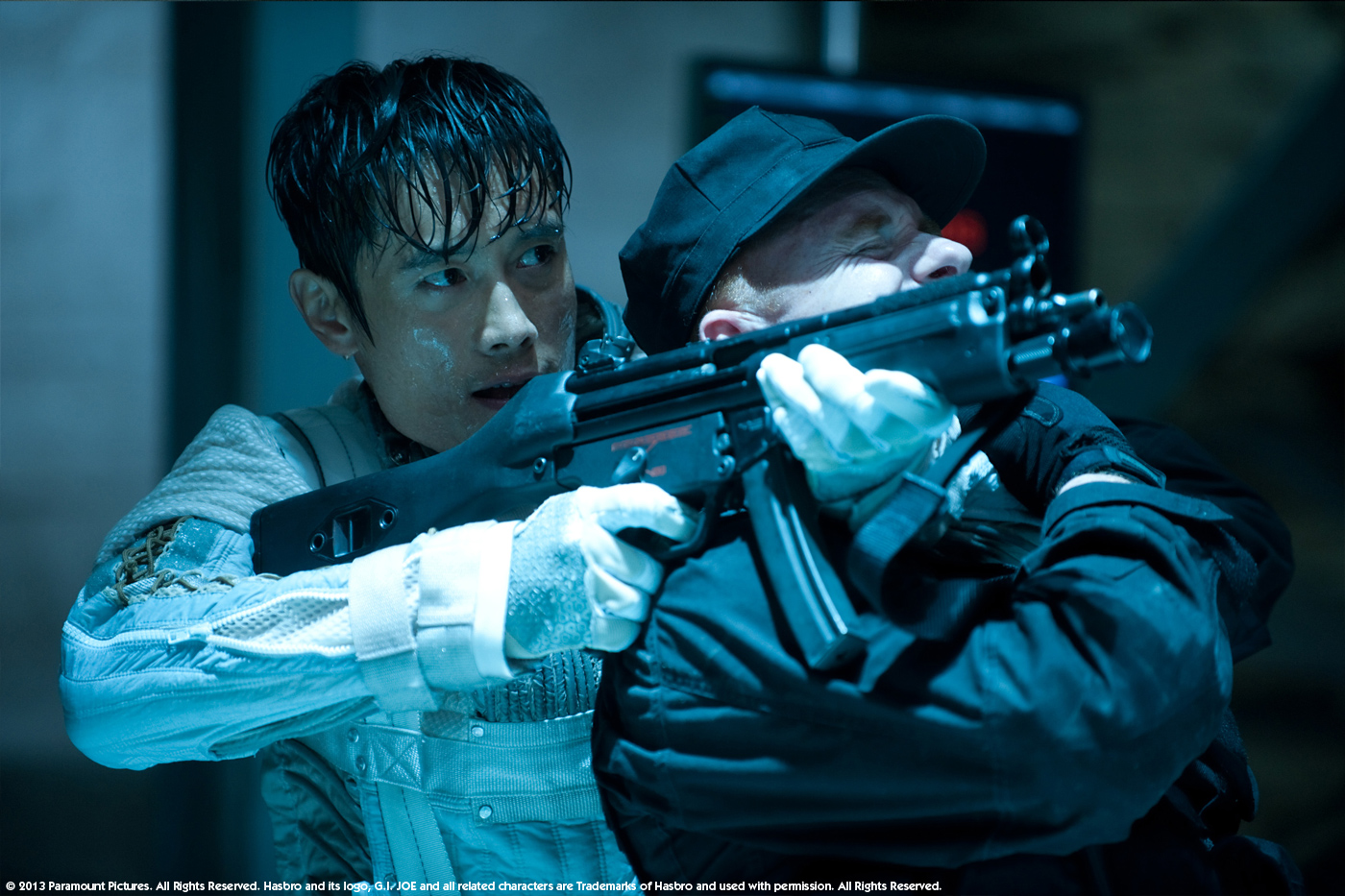Since his last appearance on The Art of VFX where he told us about the VFX of Method Studios on J. EDGAR, Ollie Rankin worked on RED DAWN.
How did Method Studios got involved on this show?
This project came hot on the heels of RED and MAN ON A LEDGE, both of which involved a collaboration between Method and Jim Madigan. We had been expanding our FX simulation capabilities for the climactic burning bridge sequence in ABRAHAM LINCOLN: VAMPIRE HUNTER, so we were keen to go after some fx-heavy work on G.I. JOE:RETALIATION.
How was the collaboration with director Jon M. Chu?
As the show was getting underway, there was a lot of talk about the first G.I. JOE and Jon really wanted to take this film in a different direction. BLACKHAWK DOWN was one of the references that kept coming up and he really emphasized using real military hardware where possible, to tell the story.
What was his approach with the visual effects?
Towards the end of the post production schedule we often had cinesync calls with both Jon and Jim. Jim was very much focused on pushing the photorealism of the shots, while Jon got the fun job: making the shots cool.
Can you tell us more about your collaboration with Production VFX Supervisor James Madigan?
Jim is a big believer in using real elements. To be honest, I think he’s a pyromaniac at heart and loves the excuse to blow stuff up.
What have you done on this show?
Our work can be seen throughout the film, with 2 large sequences that we were entirely responsible for. The Apache attack on the desert landing zone and the prison escape were each substantial sequences along with every appearance of the exploding robotic fireflies. We also did backgrounds on a number of smaller sequences, in collaboration with of our colleagues in New York, along with a series of
shots in which a pair of high tech gloves are used to melt through a fence.
Can you explain to us your work on the camp attack by an squadron of Apaches?
All the helicopters in the sequence were CG, as were all the tracers, missiles and missile trails. Many of the other shots include added or augmented explosions.
How did you create the CG Apaches and the missiles?
Since they were based on real helicopters and missiles, there was a lot of reference online to draw from. We built them in Maya and rendered in Mental Ray using a proprietary scene assembly toolset that has formed the basis of our Maya pipeline ever since.
How did you create the FX such as missile trailers and tracer fire?
The missile trails were created with Maya Fluids and we developed a system for re-using and re-timing caches to save on simulation time. The tracers were done entirely in Nuke, using the 3d capabilities to trace a path between the CG machine gun source, to an impact point in the plate and procedurally generate a varying tracer profile along that trajectory. In some shots the source or destination weren’t visible, but the same approach could still be applied.
Can you tell us more about your collaboration with the special effects teams?
Since we were going to be using so many explosions, fire and smoke in our various sequences, I went down to LA to join Jim on set for a two day element shoot. It was great to see first-hand how the practical effects guys work and how their pyro is just as unreliable and unpredictable as our cg simulations.
How did you enhanced some of the explosions?
As I mentioned, Jim preferred to use filmed elements for the actual fiery parts of the explosions, but
there were a number of shots in the prison break where we augmented element explosions with simulated rigid body destruction, particle debris and fluid-simulated smoke.
Have you created digital doubles for some stunts?
The only CG people we had in our shots were the pilots in the Apaches.
Can you tell us in details about the design and creation for the fireflies?
We received a great piece of concept art for the firefly design but we got to flesh out a lot of the details ourselves and Jon was very open to our design suggestions. Since the fireflies are seen at macro distances in some shots we went to great lengths to add enough minute detail that would hold up at that scale.
How did you rigged and animated these flies?
For the close-up shots we rigged them as hero creatures, with Maya skeletons and typical FK/IK animation rig controls. For the shots of them flying as a swarm, we developed a custom flocking system, also in Maya, that generated a path for each firefly to follow. The beauty of this approach was that we could visualize the entire animation of the swarm in 3D and if we needed to adjust the paths of a handful of flies, we could easily do so.
How did you manage the metallic render of the flies?
As anyone familiar with CG knows, shiny surfaces are pretty easy to recreate digitally. What’s not so easy is building in enough imperfections – the scratches, dents, scuffs, spots and smudges that separate a photoreal render from a CG perfect one.
Can you tell us in details about the CG destruction for the escape sequence?
We modeled the entire interior of the hallway set and then identified all the things that could or should get damaged by the series of practical explosions they had set off in the pyro plates. You might be surprised at how much of it was either done entirely in keyframe animation or was first simulated dynamically and then hand tweaked after. Swinging overhead light fittings, an exploding extractor fan and a slamming, breaking door are all hand animated. We generated and then simulated fractured geometry for the large scale debris from exploding concrete, masonry and paving tiles. And then we spawned showers of finer particulate and smoke from each of these events.
How did you create the set extensions?
Most of our set extension work was located in the desert, so we worked a lot from reference photos of sand dunes. There were invariably large camera moves with a lot of parallax, so it was never sufficient to have a purely two dimensional matte painting approach. Instead we projected matte painting onto geometry of the environment.
What was the biggest challenge on this project and how did you achieve it?
The one thing we had to do a lot in this movie, that we had no adequate reference for, was people getting engulfed in explosions. It is surprisingly difficult to convince people to do so for the purposes of research. When a scene is shot involving special effect explosions, there is always a choice the DP and director have to make. Do they set the exposure to see the detail in the fire and therefore darken everything else, or do they set the exposure for everything else and accept that the fire is going to be blown-out? With compositing they don’t need to make that choice. They can have both, but the challenge is to make it believable for the audience, when such a big exposure cheat is being used.
Was there a shot or a sequence that prevented you from sleep?
The two (actually 3) shots that kept me awake at night were:
1) A speed-ramped macro lens shot of a handful of swarming fireflies, because as I described above it can be very difficult to make a tiny shiny metallic object look imperfect enough to look real.
And 2&3) Two different shots in two different scenes of characters getting engulfed in explosions, because not only do you have to balance the desire to see detail at both ends of the exposure range and not only is it very difficult to find reference of people getting caught in explosions, but it also had to be done in « a PG-13 kind of way » in order to achieve the rating the producers wanted for the film.
What do you keep from this experience?
I had a fantastic team at Method working with me on this project and no matter the pressure or stress, no matter how late we had to work on occasion, spirits remained high throughout.
How long have you worked on this film?
7 months.
How many shots have you done?
230 shots.
What was the size of your team?
70 people including artists, technical crew and production.
What is your next project?
I’m currently heading up Method’s share of WHITE HOUSE DOWN, the next Roland Emmerich action thriller, where we are taking what we developed on G.I. JOE:RETALIATION to the next level.
A big thanks for your time.
// WANT TO KNOW MORE?
– Method Studios: Official website of Method Studios.
© Vincent Frei – The Art of VFX – 2013








